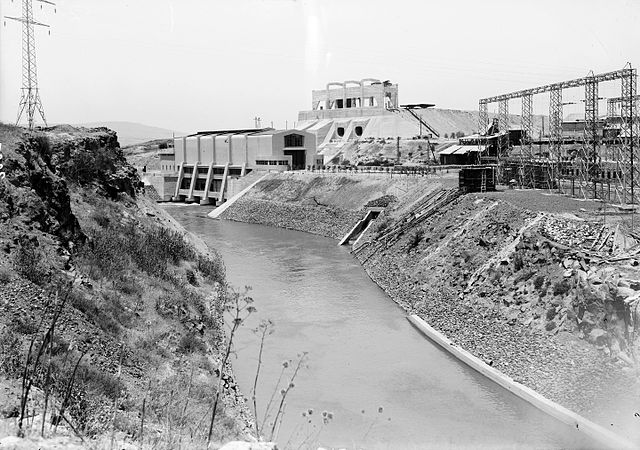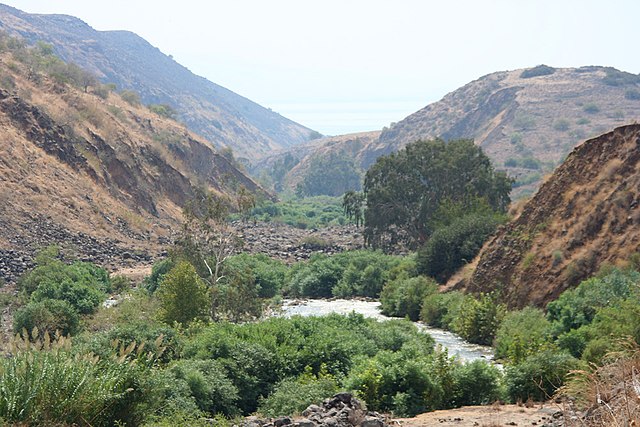The Jordan Valley forms part of the larger Jordan Rift Valley. Unlike most other river valleys, the term "Jordan Valley" often applies just to the lower course of the Jordan River, from the spot where it exits the Sea of Galilee in the north, to the end of its course where it flows into the Dead Sea in the south. In a wider sense, the term may also cover the Dead Sea basin and the Arabah valley, which is the rift valley segment beyond the Dead Sea and ending at Aqaba/Eilat, 155 km (96 mi) farther south.
Jordan Valley
The Sea of Galilee. At its southern tip (right side) the Jordan River exits the lake and enters the Jordan Valley.
Rutenberg power plant, circa 1933
The Jordan salient, 5–7 June.
The Jordan Rift Valley, also Jordan Valley (Hebrew: בִּקְעָת הַיַרְדֵּן Bīqʿāt haYardēn, Arabic: الغور Al-Ghor or Al-Ghawr), also called the Syro-African Depression, is an elongated depression located in modern-day Israel, Jordan and the West Bank. This geographic region includes the entire length of the Jordan River – from its sources, through the Hula Valley, the Korazim block, the Sea of Galilee, the (Lower) Jordan Valley, all the way to the Dead Sea, the lowest land elevation on Earth – and then continues through the Arabah depression, the Gulf of Aqaba whose shorelines it incorporates, until finally reaching the Red Sea proper at the Straits of Tiran.
Bik'at Hayarden
A 2003 satellite image of the region showing the Jordan Rift Valley
Northern section of the Great Rift Valley. The Sinai Peninsula is in center and the Dead Sea and Jordan River valley above
View of the Jordan Valley, where the earthquake occurred.








